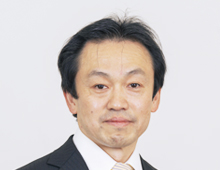Topological Phenomena Theory Research Team
Principal Investigator
- PI Name
- Shuichi Murakami
- Title
- Team Director
- Brief Resume
1995 Research Associate, Department of Applied Physics, University of Tokyo 1999 Ph.D., University of Tokyo 1999 Visiting Scholar, Department of Physics, Stanford University 2007 Associate Professor, Department of Physics, Tokyo Institute of Technology 2007 PRESTO researcher, Japan Science and Technology Agency 2012 Professor, Department of Physics, Tokyo Institute of Technology 2016 Professor, Materials Research Center for Element Strategy, Tokyo Institute of Technology 2024 Professor, Department of Physics, Institute of Science Tokyo 2024 Specially Appointed Professor, International Institute for Sustainability with Knotted Chiral Meta Matter, Hiroshima University (-present) 2025 Professor, Department of Applied Physics, the University of Tokyo (-present) 2025 Team Director, Topological Phenomena Theory Research Team, RIKEN Center for Emergent Matter Science (-present)

Outline
Our team conducts theoretical research on emergent physical phenomena of electrons and quasiparticles in materials and waves in metamaterials, focusing on their topological structures. Our research methods are mainly analytical methods using models, and we find universal laws and phenomena from a broad perspective of quantum to classical systems. Our research activities cover a wide range of topics, from research on specific materials to the construction of theoretical frameworks for condensed matter and mathematical physics. Specifically, we are working in the fields such as topological phases, chiral phonons, electro-magnetic multipoles, non-Hermitian systems, and metamaterials.
Research Fields
Physics, Materials Sciences
Keywords
Topological insulator
Spintronics
Topological semimetal
Results
Theory of emergent phenomena by chiral phonons
Phonons are quantized vibrations of atoms in crystals, but in some materials, these phonons are accompanied by rotational motion. Such phonons are called chiral phonons. For example, in a system with a chiral crystal structure such as tellurium, the phonons are chiral phonons and involve angular momentum. We are theoretically studying new phenomena related to the angular momentum of such phonons. For example, we theoretically propose that in crystals with low symmetry, chiral phonons are induced when a temperature gradient is present in the crystal. Furthermore, we have theoretically shown that chiral phonons induce spin magnetization in electronic systems, noting that the angular momentum of phonons has the same symmetry as that of electron spin. This phenomenon is caused by the dynamical modulation of the electronic state by chiral phonons, which acquire a geometric phase (Berry phase) and induce spin polarization. Furthermore, we found that in localized spin systems such as ferromagnets and antiferromagnets, chiral phonons induce changes in magnon excitations. These indicate that chiral phonons act as an effective magnetic field for electrons and magnons.
Members
Shuichi Murakami |
Team Director | shuichi.murakami[at]riken.jp |
|---|
Publications
- T. Zhang, S. Murakami, H. Miao
Nat. Commun. 16, 3560 (2025)Weyl phonons: the connection of topology and chirality
- H. Wada, K. Naito, S. Ono, K. Shiozaki, and S. Murakami
Phys. Rev. B 109, 085114 (2024)General corner charge formulas in various tetrahedral and cubic space groups
- H. Yoshida, T. Zhang, S. Murakami
Phys. Rev. B 107, 035122 (2023)Polarization jumps by breaking symmetries of two-dimensional Weyl semimetals
- Y. Tanaka, T. Zhang, M. Uwaha, S. Murakami
Phys. Rev. Lett. 129, 046802 (2022)Anomalous Crystal Shapes of Topological Crystalline Insulators
- K. Yokomizo and S. Murakami
Phys. Rev. Lett. 123, 066404 (2019)Non-Bloch Band Theory of Non-Hermitian Systems
- M. Hamada, E. Minamitani, M. Hirayama, and S. Murakami
Phys. Rev. Lett. 121, 175301 (2018)Phonon Angular Momentum Induced by the Temperature Gradient
- M. Hirayama, R. Okugawa, T. Miyake, and S. Murakami
Nat. Commun. 8, 14022 (2017)Topological Dirac nodal lines and surface charges in fcc alkaline earth metals
- R. Matsumoto and S. Murakami
Phys. Rev. Lett. 106, 197202 (2011)Theoretical prediction of rotating magnon wavepacket in ferromagnets
- S. Murakami
New J. Phys. 9, 356 (2007)Phase transition between the quantum spin Hall and insulator phases in 3D: emergence of a topological gapless phase
- S. Murakami
Phys. Rev. Lett. 97, 236805 (2006)Quantum Spin Hall Effect and Enhanced Magnetic Response by Spin-Orbit Coupling
Contact Us
E-mail:
shuichi.murakami[at]riken.jp

